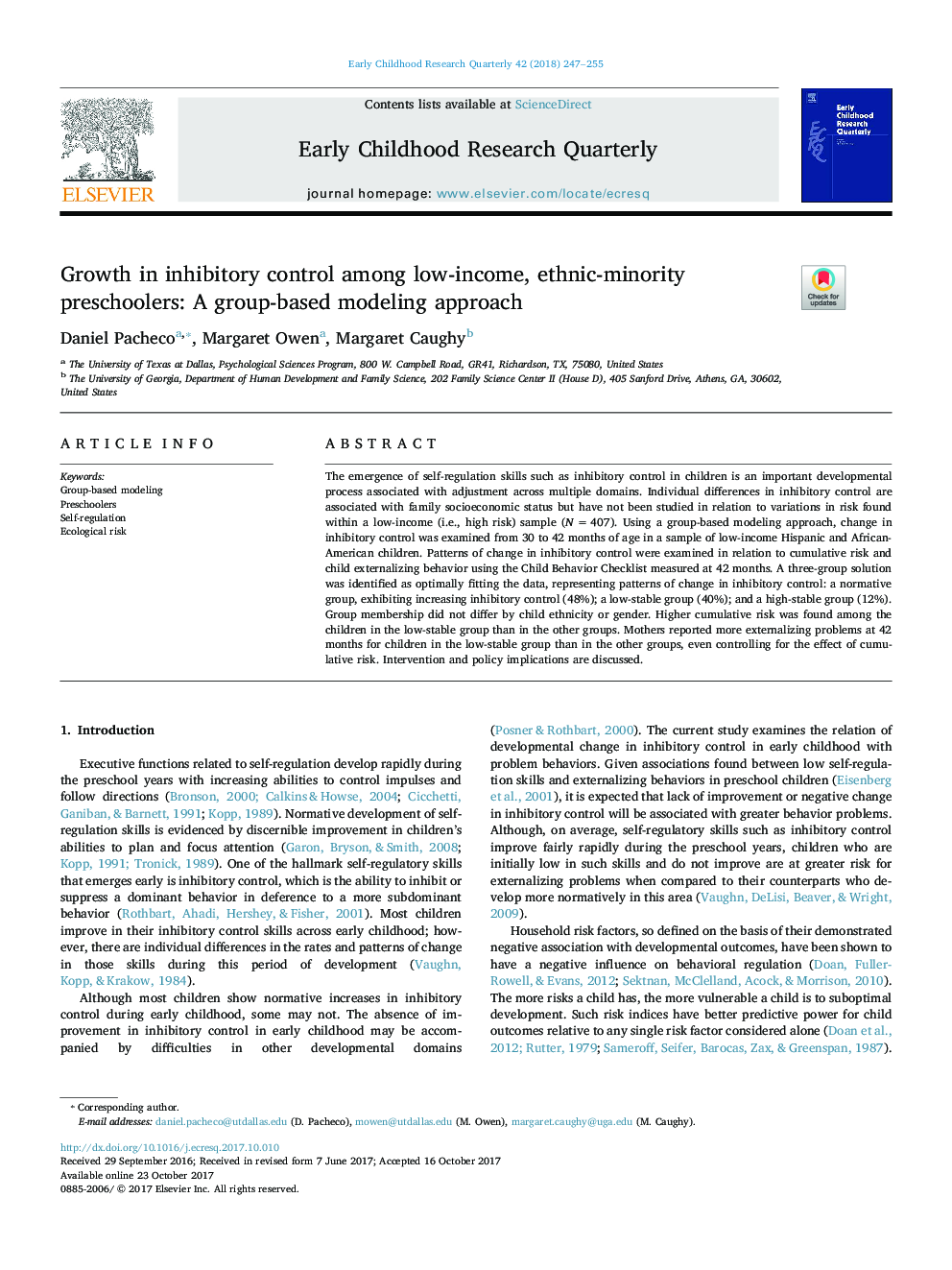| Article ID | Journal | Published Year | Pages | File Type |
|---|---|---|---|---|
| 6840690 | Early Childhood Research Quarterly | 2018 | 9 Pages |
Abstract
The emergence of self-regulation skills such as inhibitory control in children is an important developmental process associated with adjustment across multiple domains. Individual differences in inhibitory control are associated with family socioeconomic status but have not been studied in relation to variations in risk found within a low-income (i.e., high risk) sample (NÂ =Â 407). Using a group-based modeling approach, change in inhibitory control was examined from 30 to 42 months of age in a sample of low-income Hispanic and African-American children. Patterns of change in inhibitory control were examined in relation to cumulative risk and child externalizing behavior using the Child Behavior Checklist measured at 42 months. A three-group solution was identified as optimally fitting the data, representing patterns of change in inhibitory control: a normative group, exhibiting increasing inhibitory control (48%); a low-stable group (40%); and a high-stable group (12%). Group membership did not differ by child ethnicity or gender. Higher cumulative risk was found among the children in the low-stable group than in the other groups. Mothers reported more externalizing problems at 42 months for children in the low-stable group than in the other groups, even controlling for the effect of cumulative risk. Intervention and policy implications are discussed.
Related Topics
Social Sciences and Humanities
Psychology
Applied Psychology
Authors
Daniel Pacheco, Margaret Owen, Margaret Caughy,
